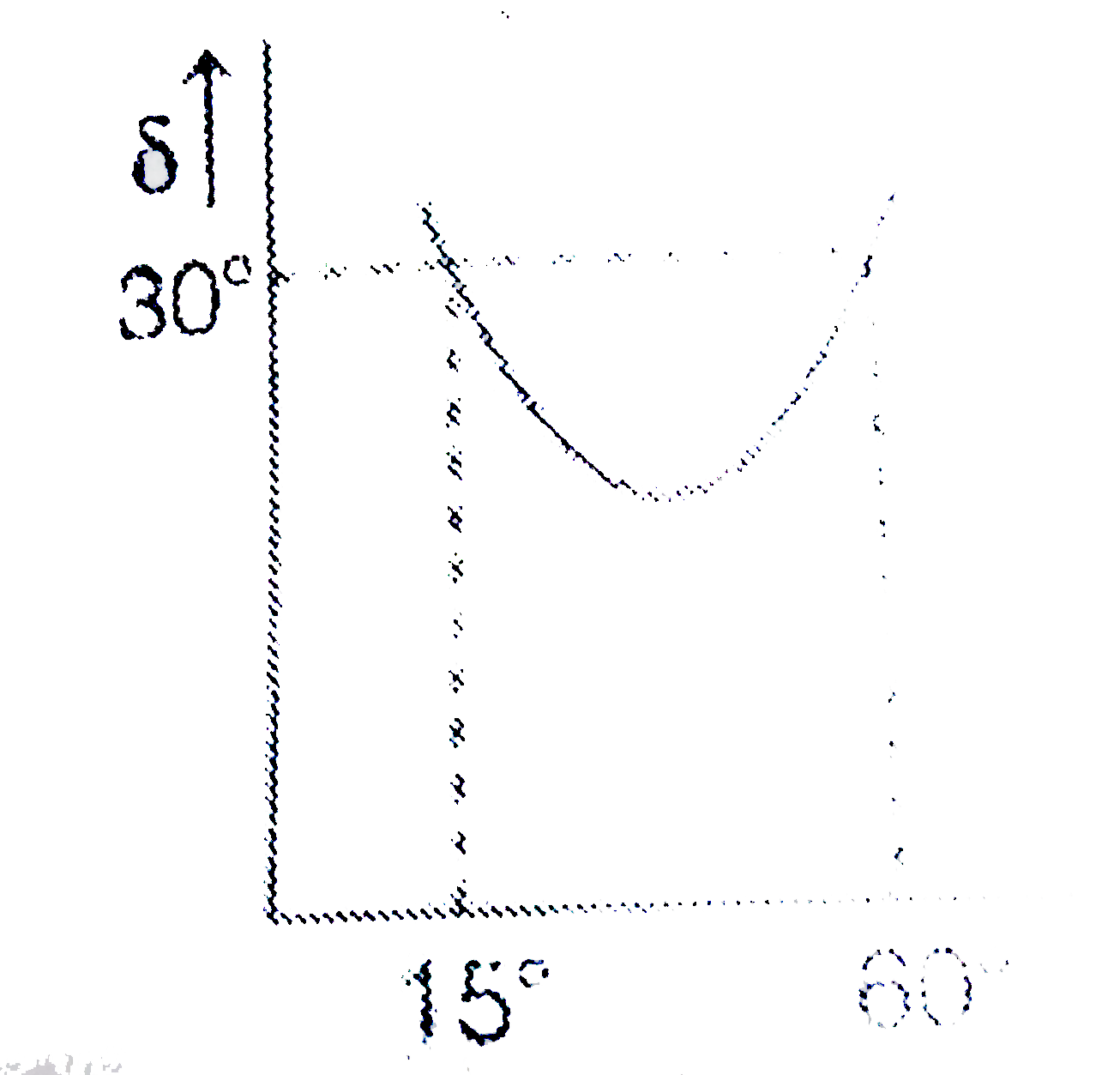A ray is incident on the first prism at an angle of incidence of 53∘ as shown in the figure . The angle between side CA and B'A' for the net deviation by both the prisms to be double of the deviation produced by the first prism , will be
_E01_086_Q01.png) Solution in Gujrati
Solution in Gujrati
sin−1(2)3+53∘
sin−1(2)3+37∘
cos−1(2)3+53∘
2sin−1(2)3
The correct Answer is:B,C,D
Topper's Solved these Questions
- GEOMETRICAL OPTICSBOOK - ALLEN CHAPTER - GEOMETRICAL OPTICSEXERCISE - EXERCISE-3
12 Videos
- GEOMETRICAL OPTICSBOOK - ALLEN CHAPTER - GEOMETRICAL OPTICSEXERCISE - EXERCISE-04[A]
23 Videos
- GEOMETRICAL OPTICSBOOK - ALLEN CHAPTER - GEOMETRICAL OPTICSEXERCISE - EXERCISE- 01
45 Videos
- CURRENT ELECTRICITYBOOK - ALLEN CHAPTER - CURRENT ELECTRICITYEXERCISE - EX.II
66 Videos
- GRAVITATIONBOOK - ALLEN CHAPTER - GRAVITATIONEXERCISE - EXERCISE 4
9 Videos
Similar Questions
Plane mirrors are arranged parallel to each other as shown in column-I and the number of images formed by the combination is in column- II
_E01_090_S01.png)
View SolutionA plane mirror of circular shape with radius r=20cm is fixed to the ceiling .A bulb is to be placed on the axis of the mirror.A circular area of radius R=1m on the floor is to be illuminated after reflection of light from the mirror. The height of the room is 3m What is maximum distance from the center of the mirror and the bulb so that the required area is illuminated?
View SolutionTwo plane mirror M1andM2 are inclined to each other at 70∘. A ray incident on the mirror M1 at an angle θ fallls on M2 and is then reflected parallel to M1 for
View SolutionIn the Bohr's model of hy drogen atom, the electron moves around the nucleus in a circular orbit of radius 5×10−11m. Its time period is 1.5×10−16s. The current associated with the electron motion is:-
View SolutionAssertion : The difference in the value of acceleration due to gravity at pole and equator is proportional to square of angular velocity of earth.
Reason : the value of acceleration due to gravity is minimum at the equator and maximum at the pole.
View SolutionFigure shows the graph of angle of deviation del versus angle of incidence i for a light ray striking a prism. The prism angle is
View SolutionAn equilateral prism is placed on the prism table of a spectrometer in the position of minimum deviation. If the angle of incidence is 60º, the angle of deviation of the ray is :
View SolutionA ray passes through a prism of angle 60^(@) in minimum deviation position and suffers a deviation of 30^(@) . What is the angle of incidence on the prism
View SolutionFigure shown the graph of angle of deviation δ verses angle of incidence I for a light ray striking a prism. The prism angle is

View SolutionFigure shows graph of deviation δ versus angle of incidence for a light ray striking a prism. Angle of prism is

View SolutionA ray of light is incident on a 60∘ prism at the minimum deviation position. The angle of refraction at the first face (i.e. incident face) of the prism is-
View SolutionA ray of light is incident on a 60∘ prism at the minimum deviation position. The angle of refraction at the first face (i.e. incident face) of the prism is-
View SolutionA prism has a prism angle 60^(@) . A light ray incident at an angle of 45^(@) deviates by an angle 40^(@) . Calculate the angle between emergent ray and prism surface.
View SolutionA ray of light is incident on a 60^(@) prism at the minimum deviation position. The angle of refraction at the first face (i.e. incident face) of the prism is-
View SolutionFigure shows graph of deviation delta versus angle of incidence for a light ray striking a prism. Angle of prism is
View SolutionAn equilateral prism is placed on the prism table of a spectrometer in the position of minimum deviation. If the angle of incidence is 60∘, the angle of deviation of the ray is :
View Solution

_E01_086_S01.png)